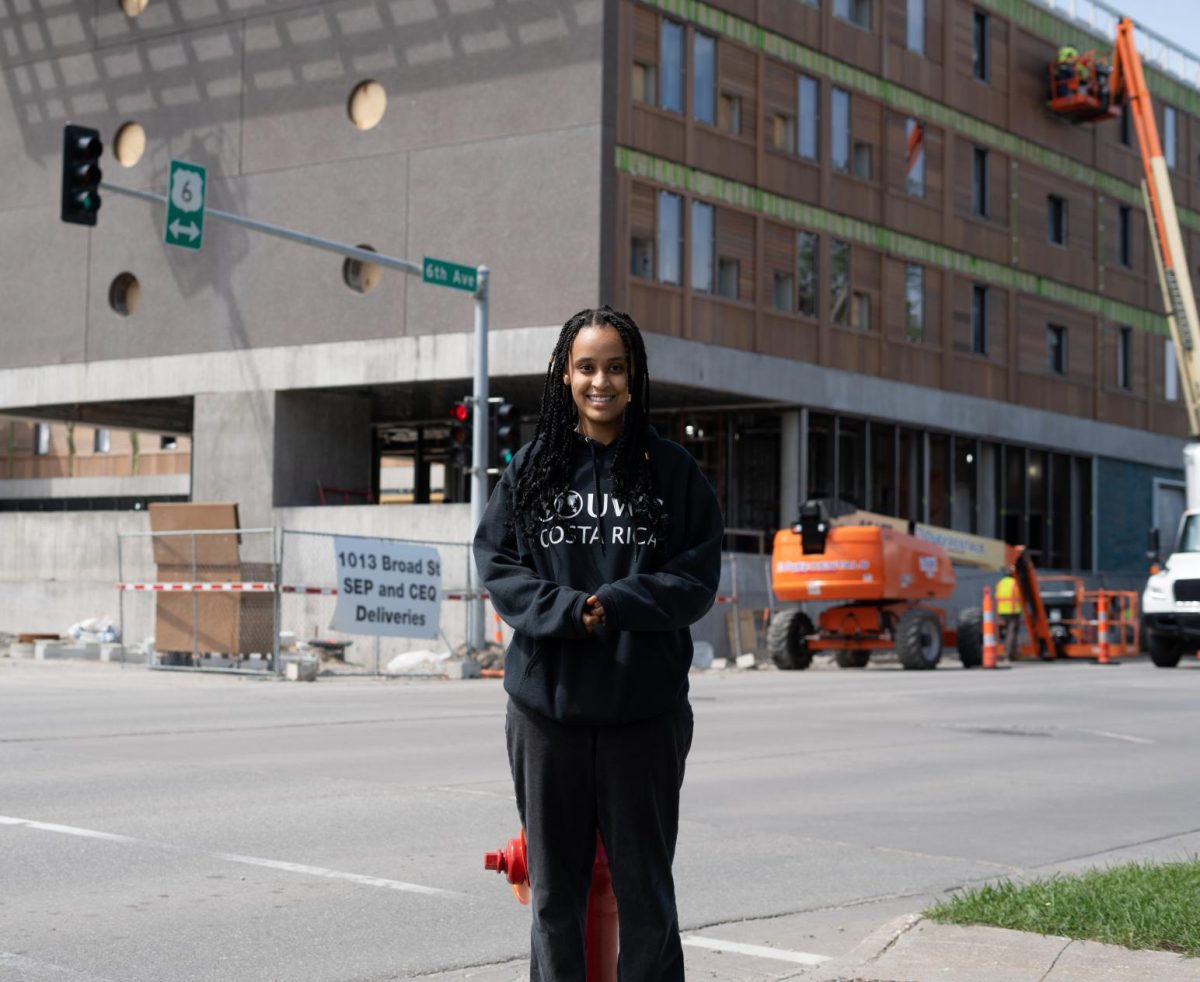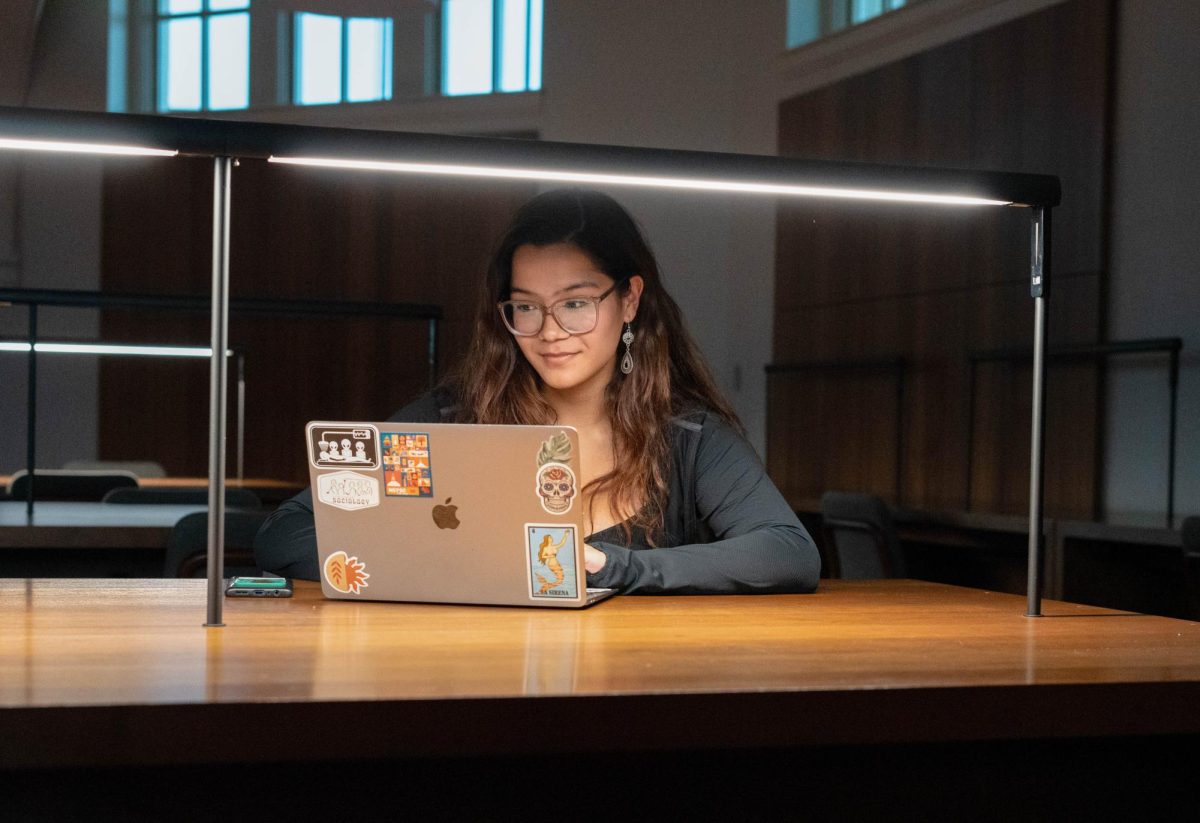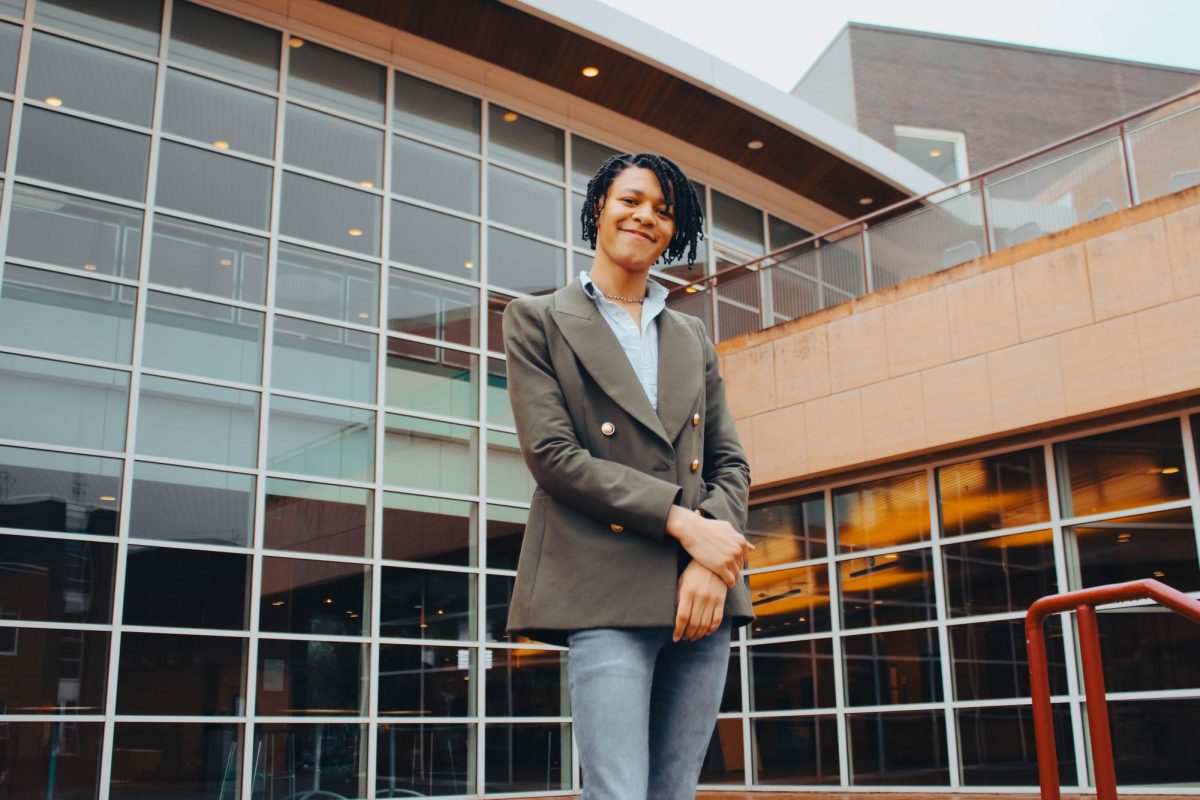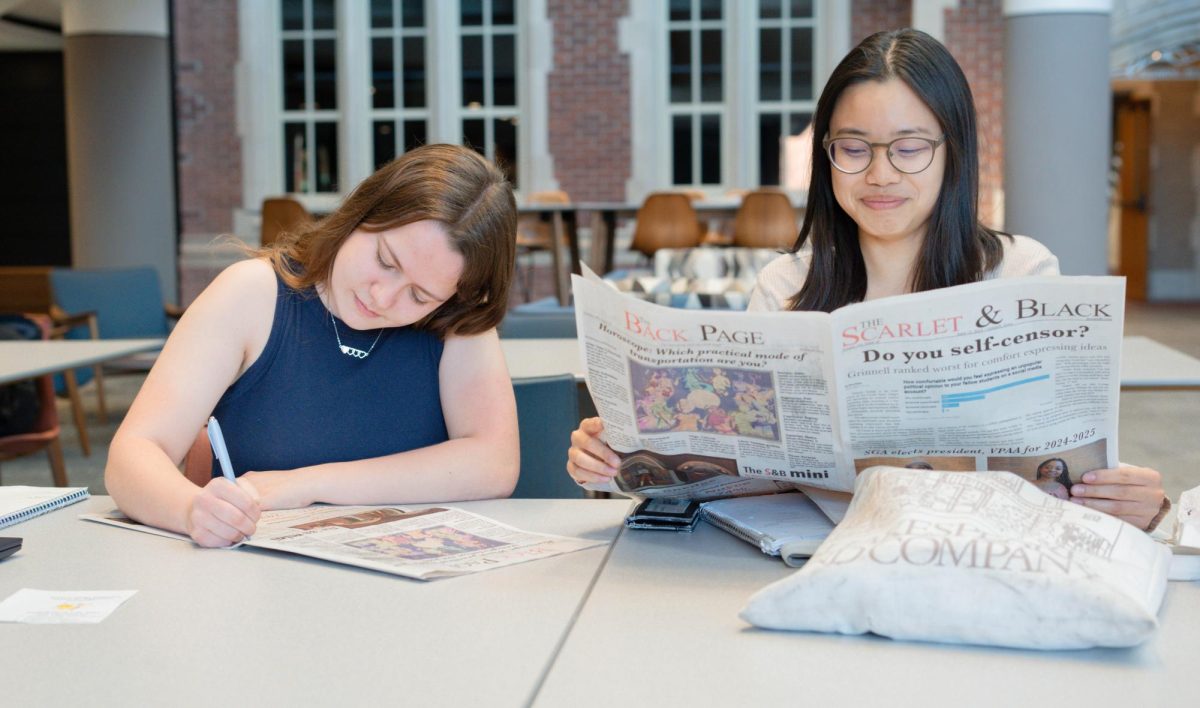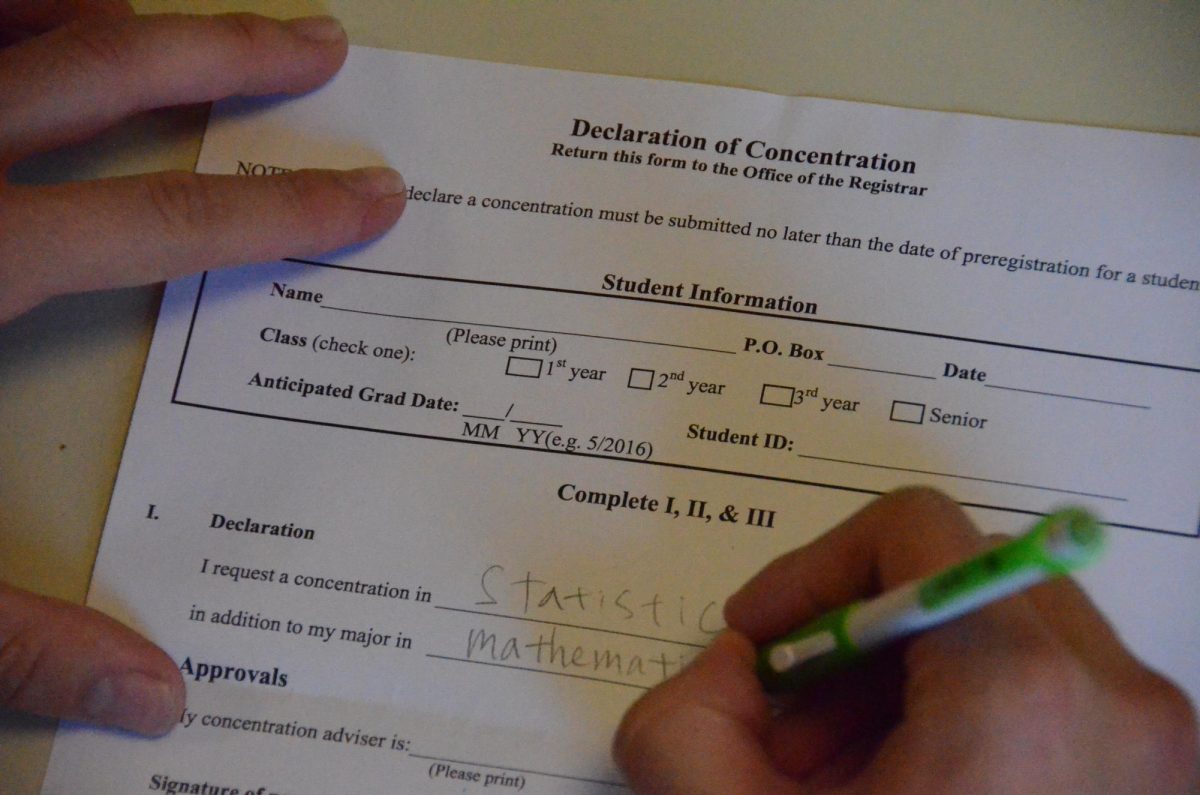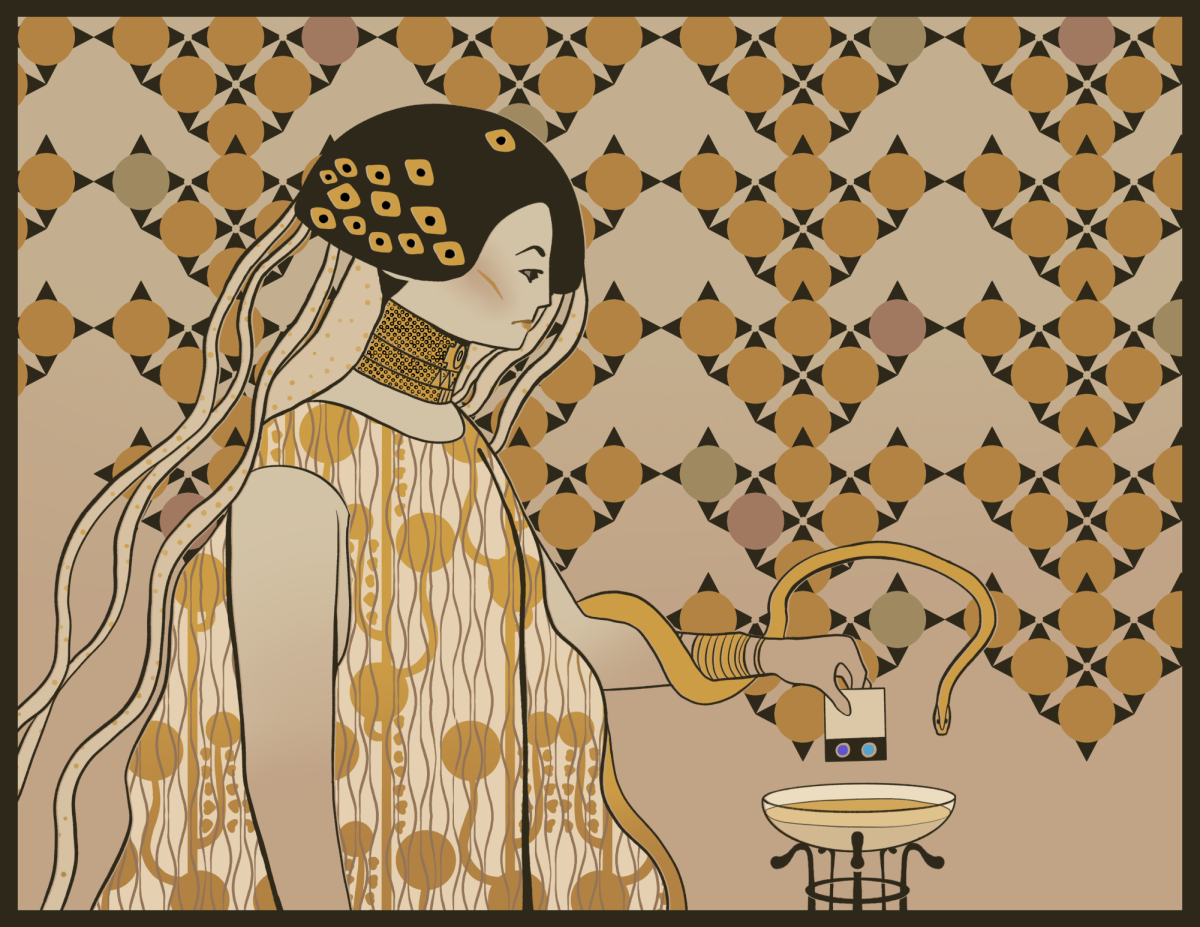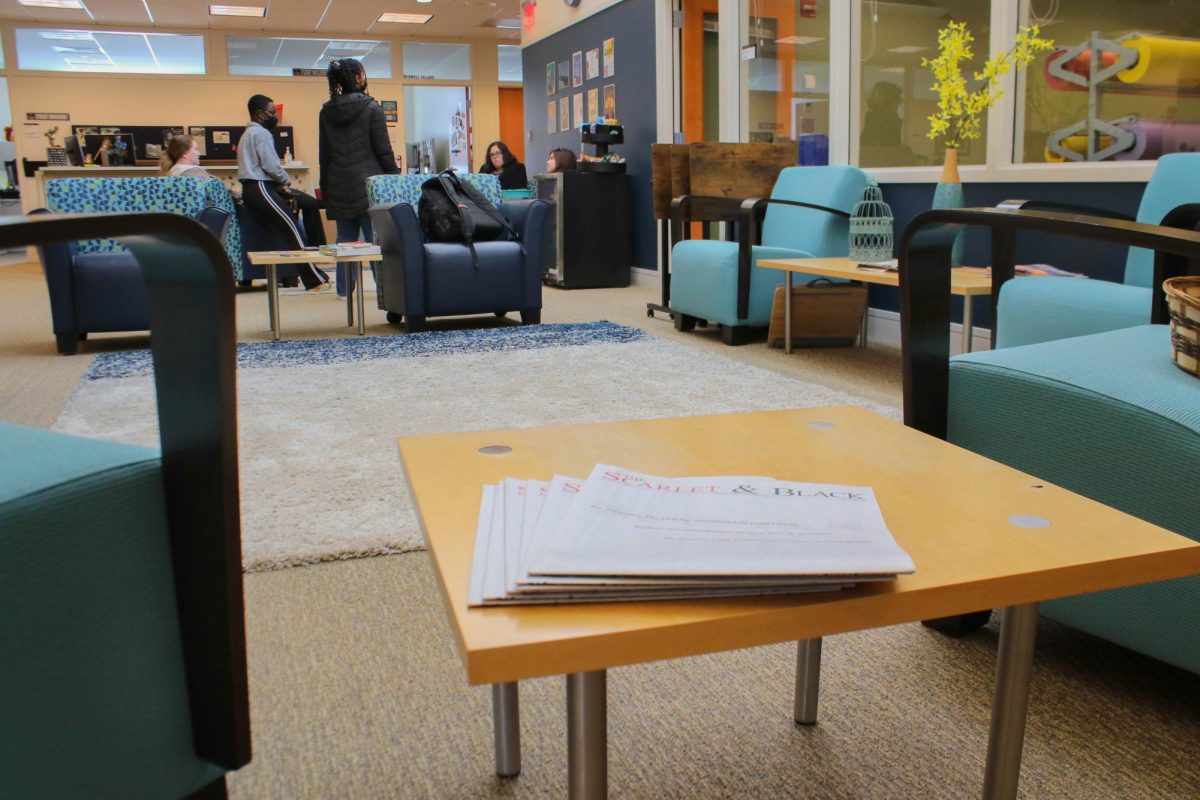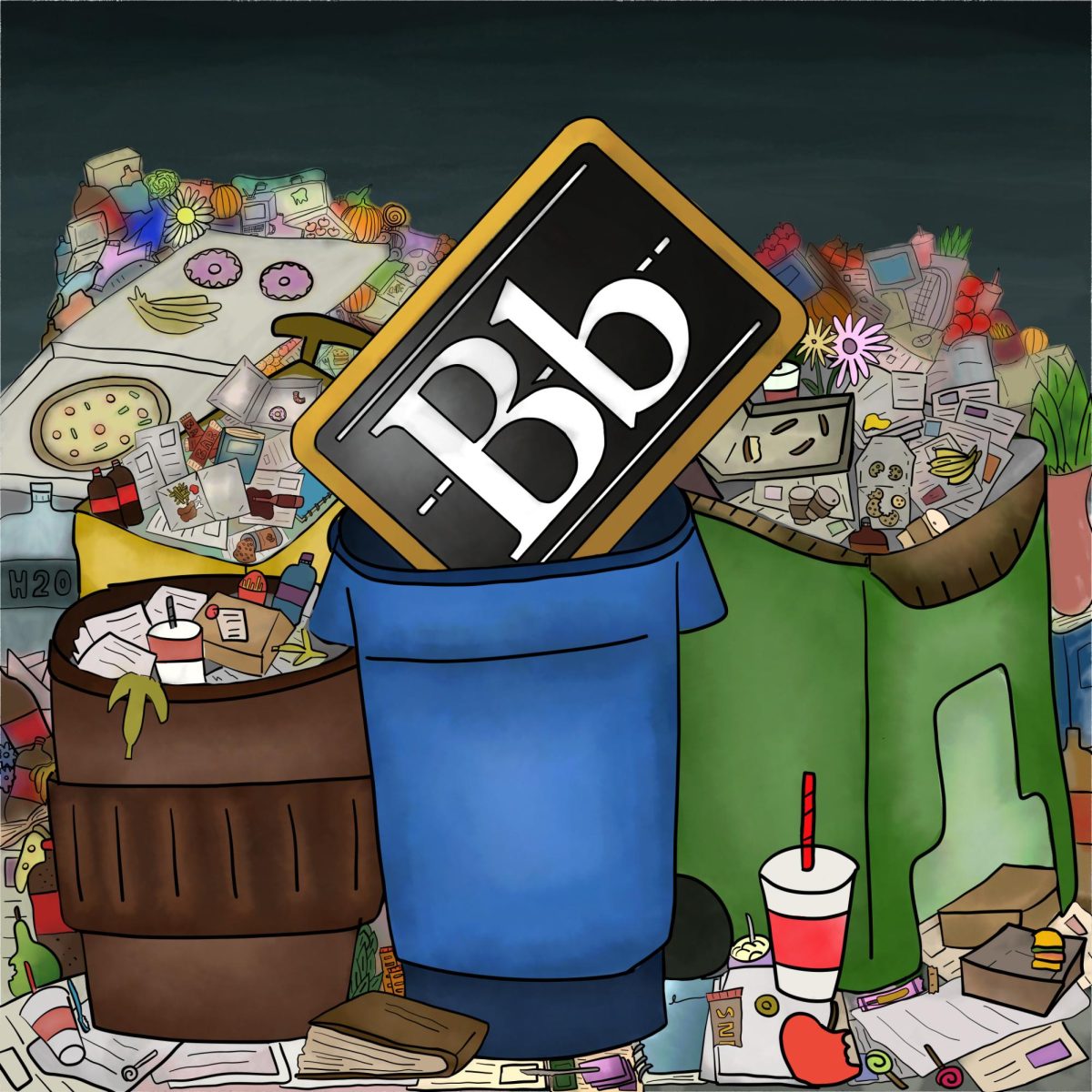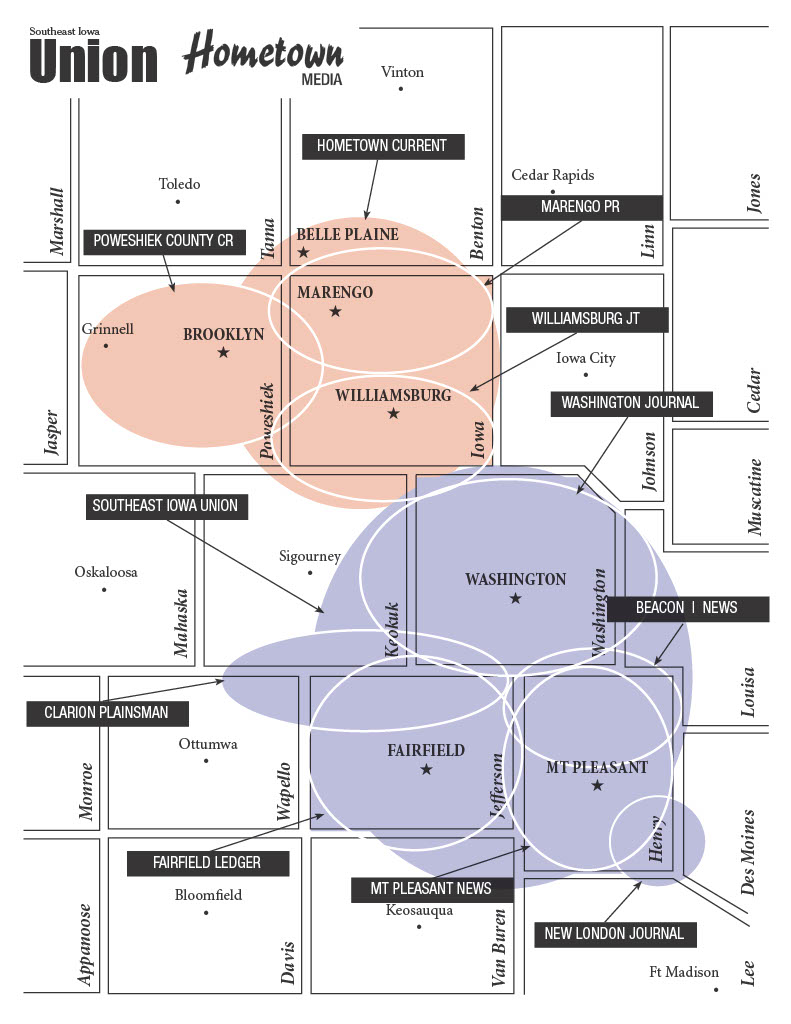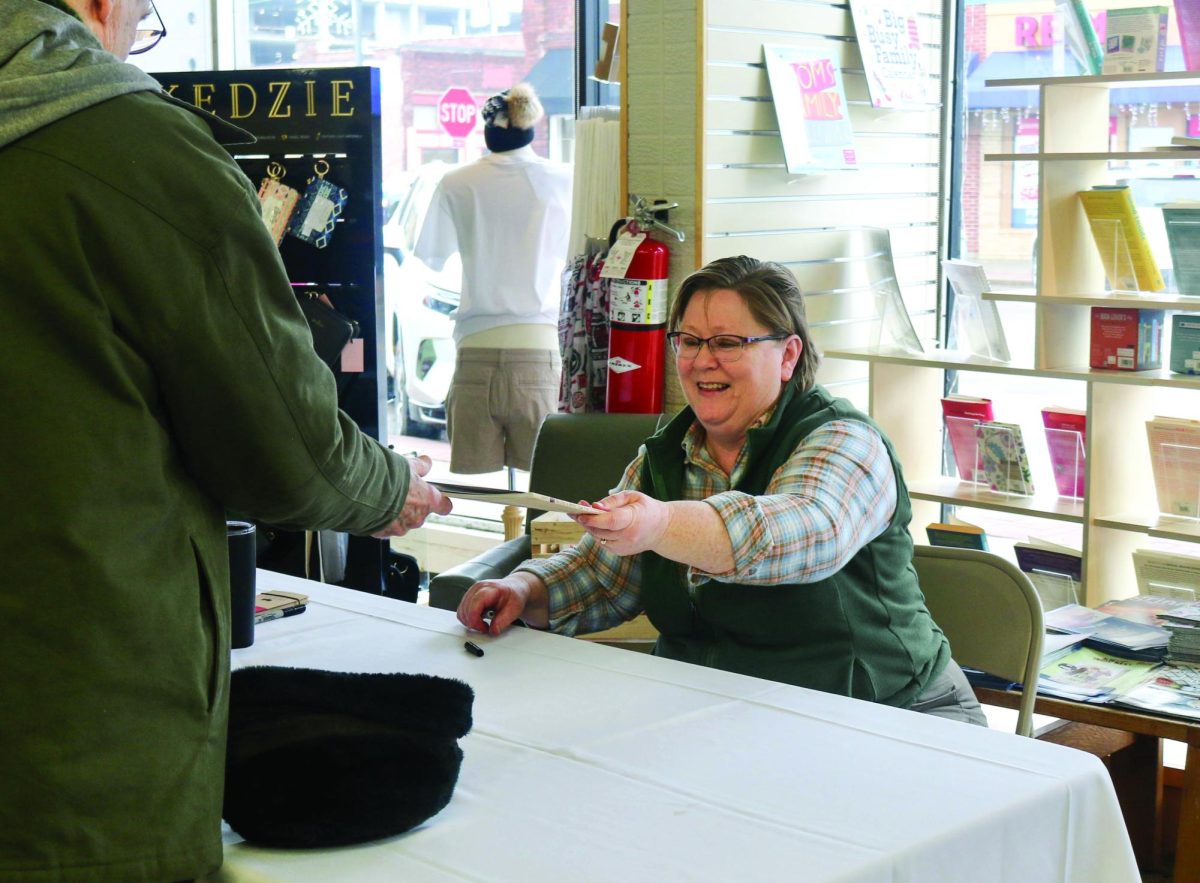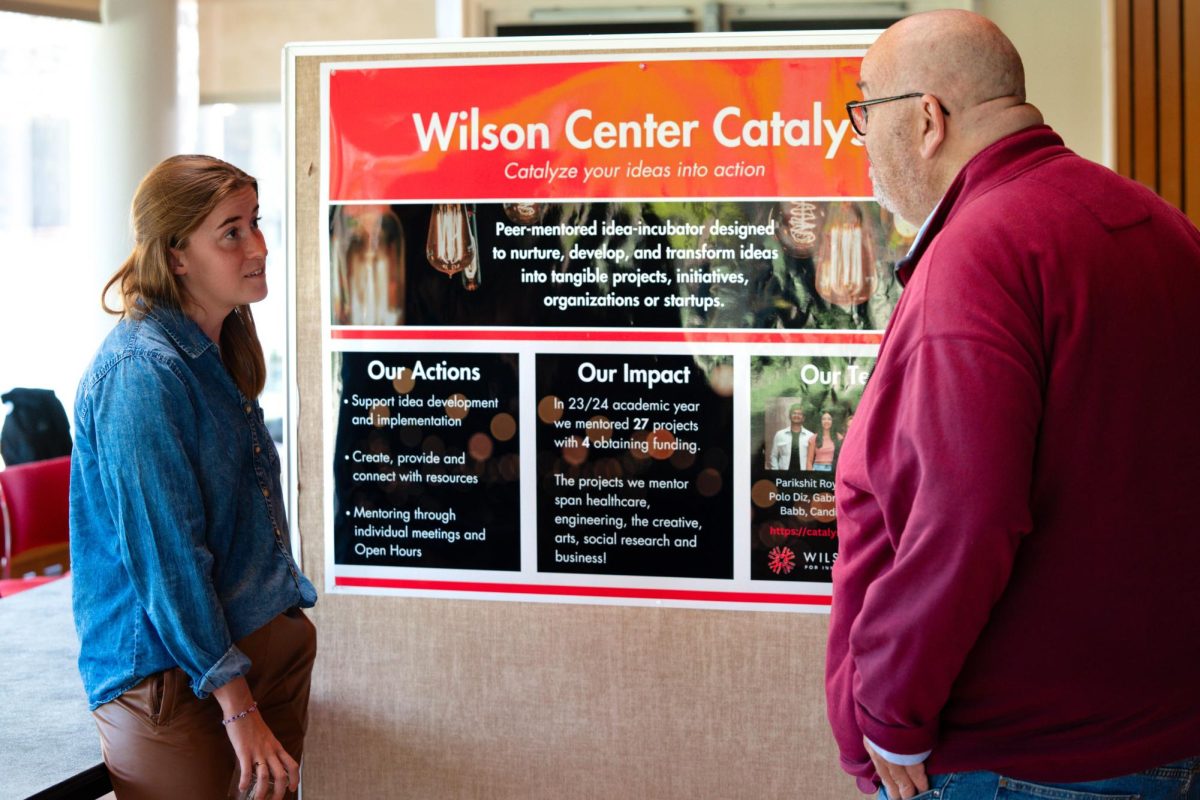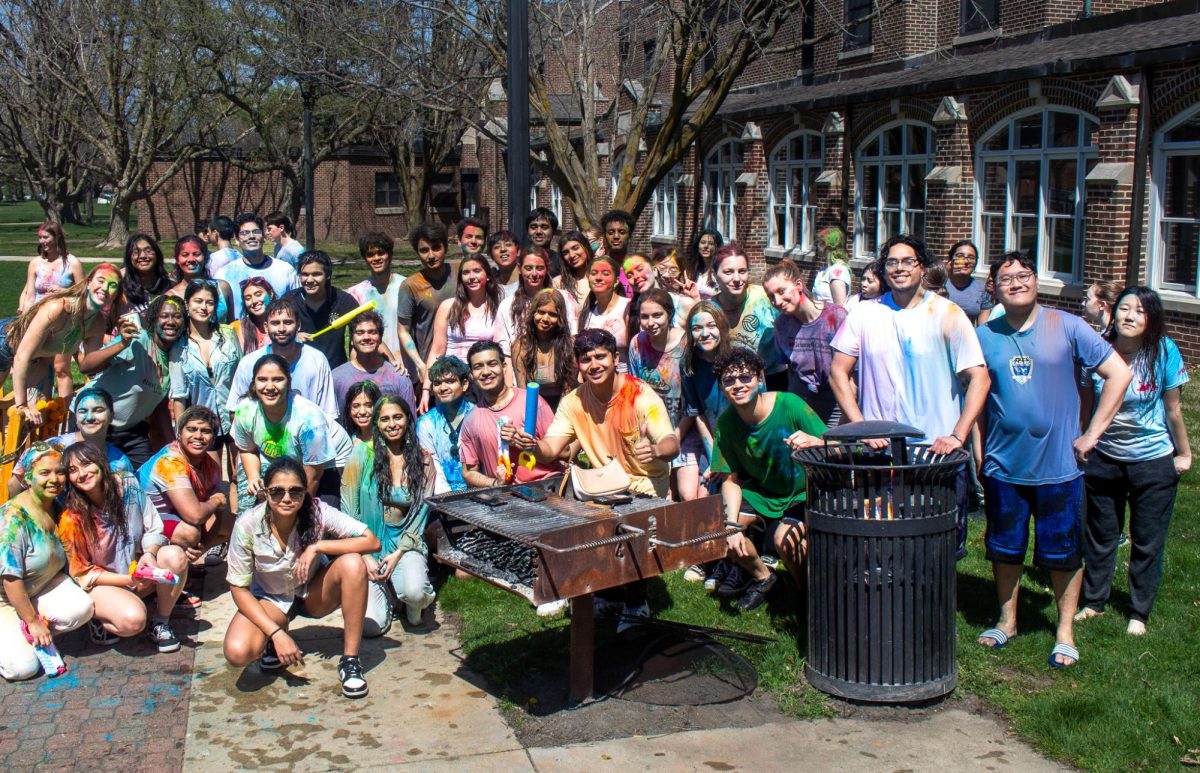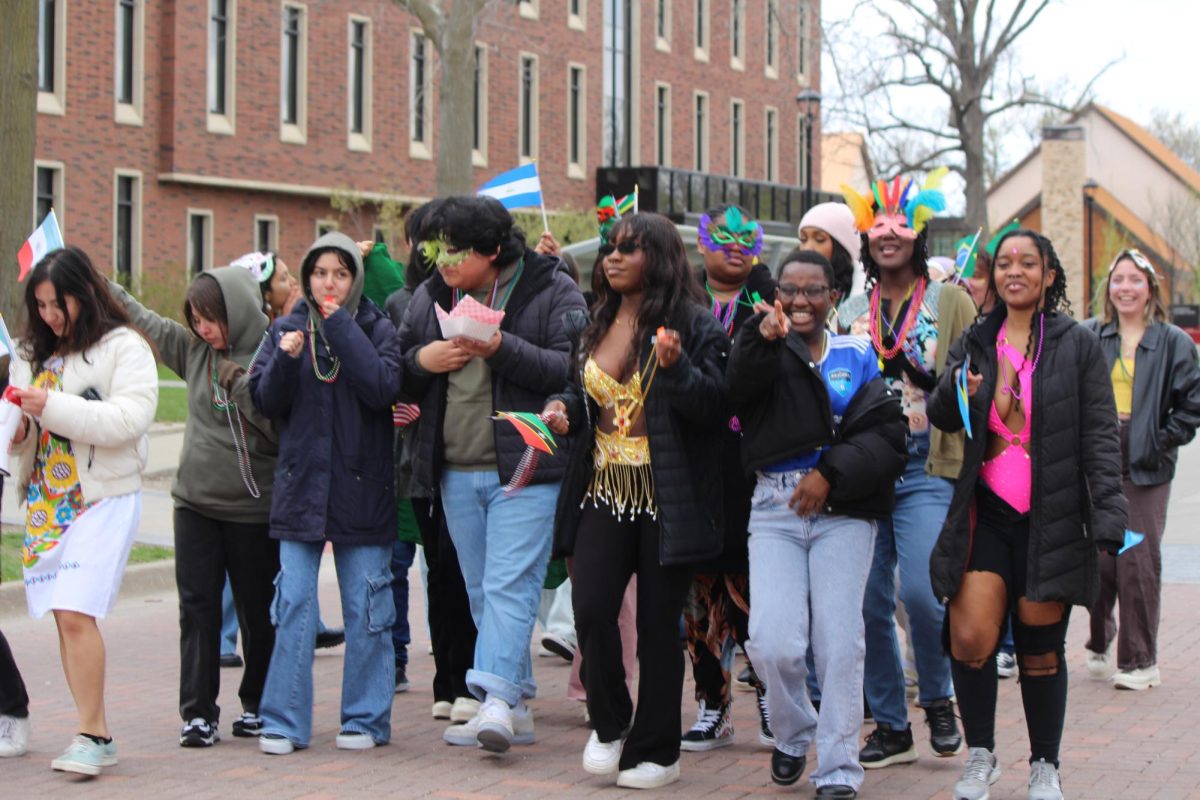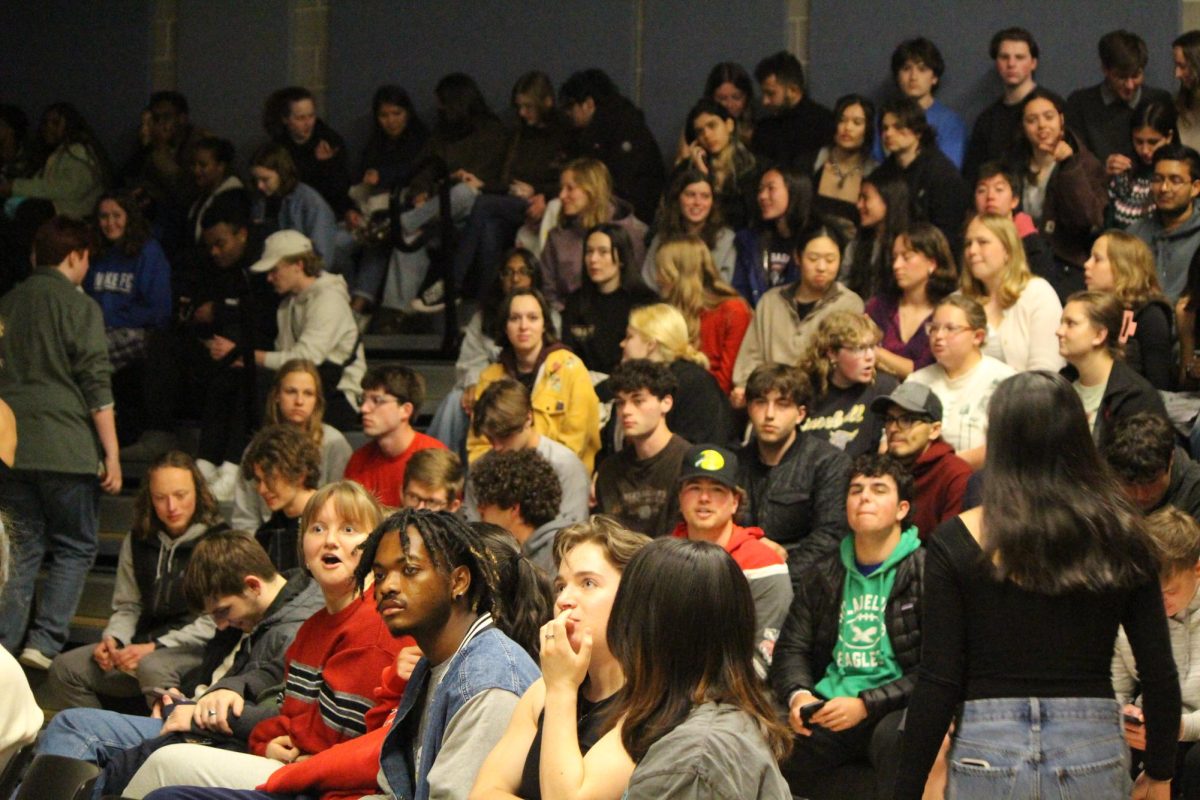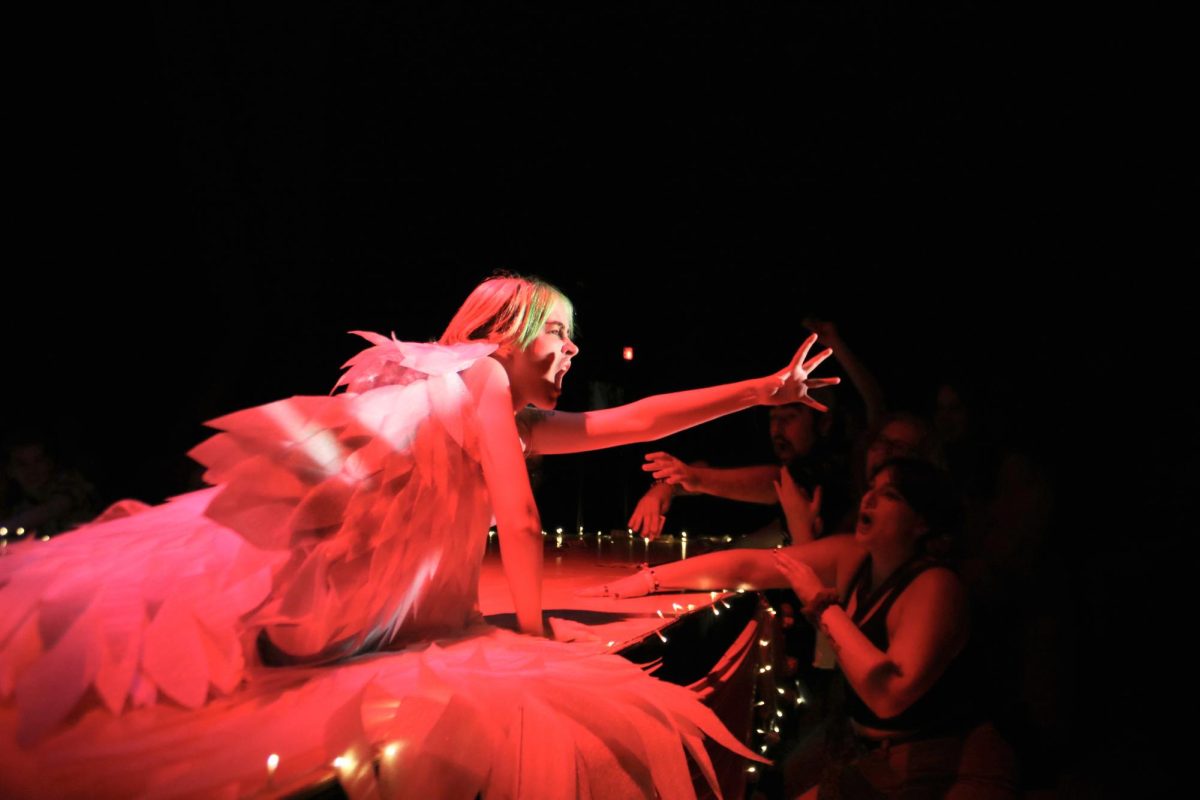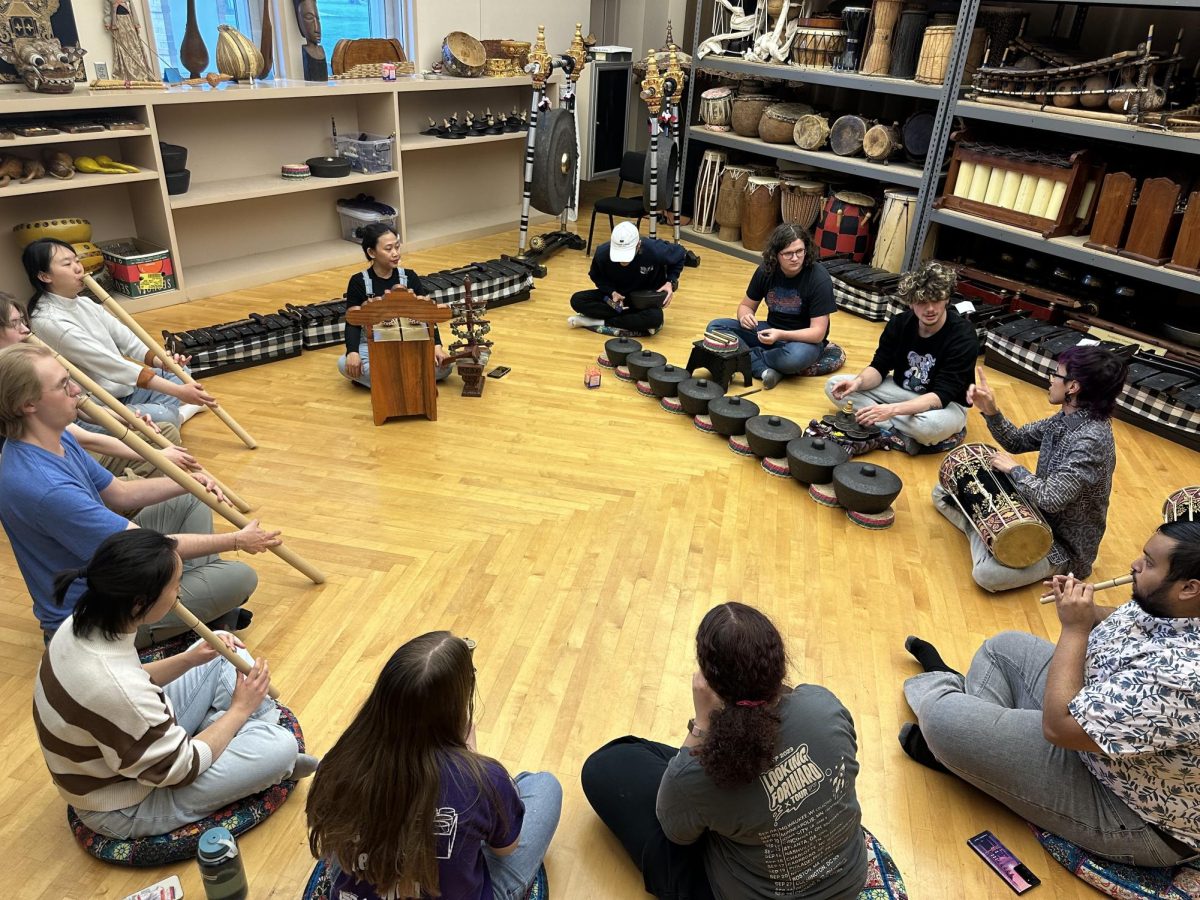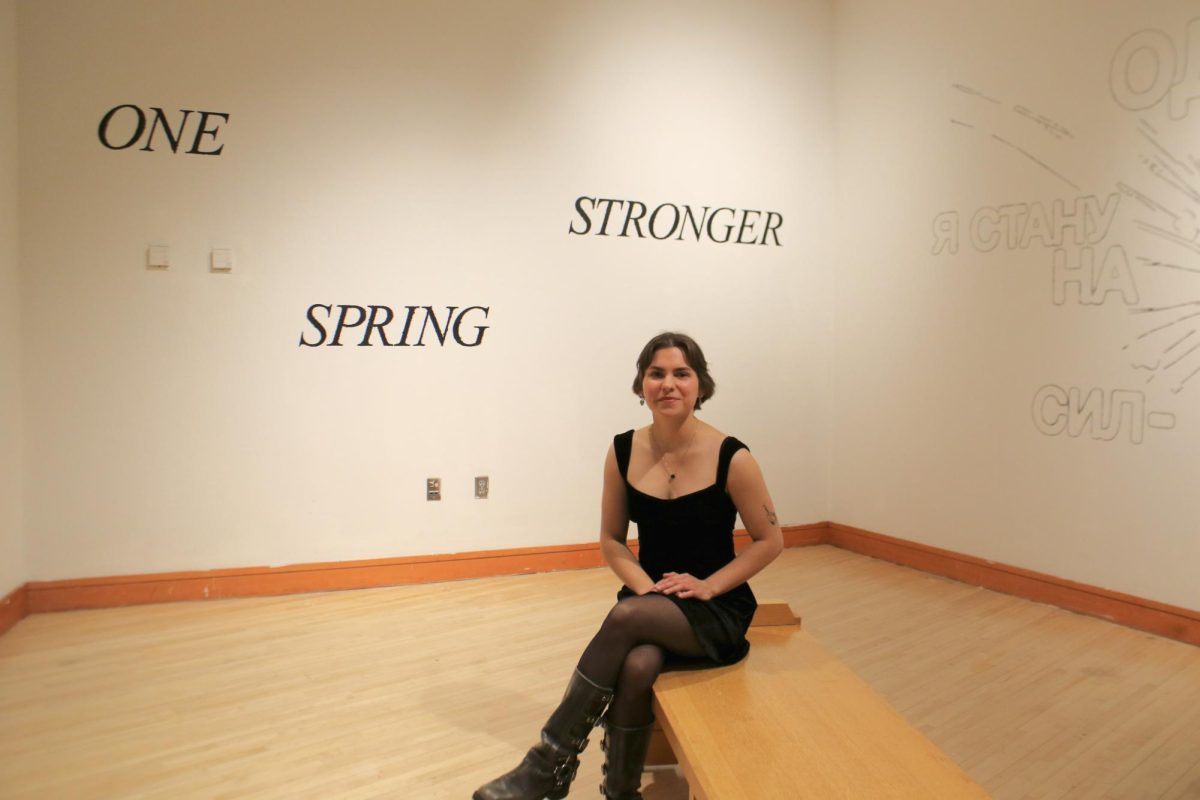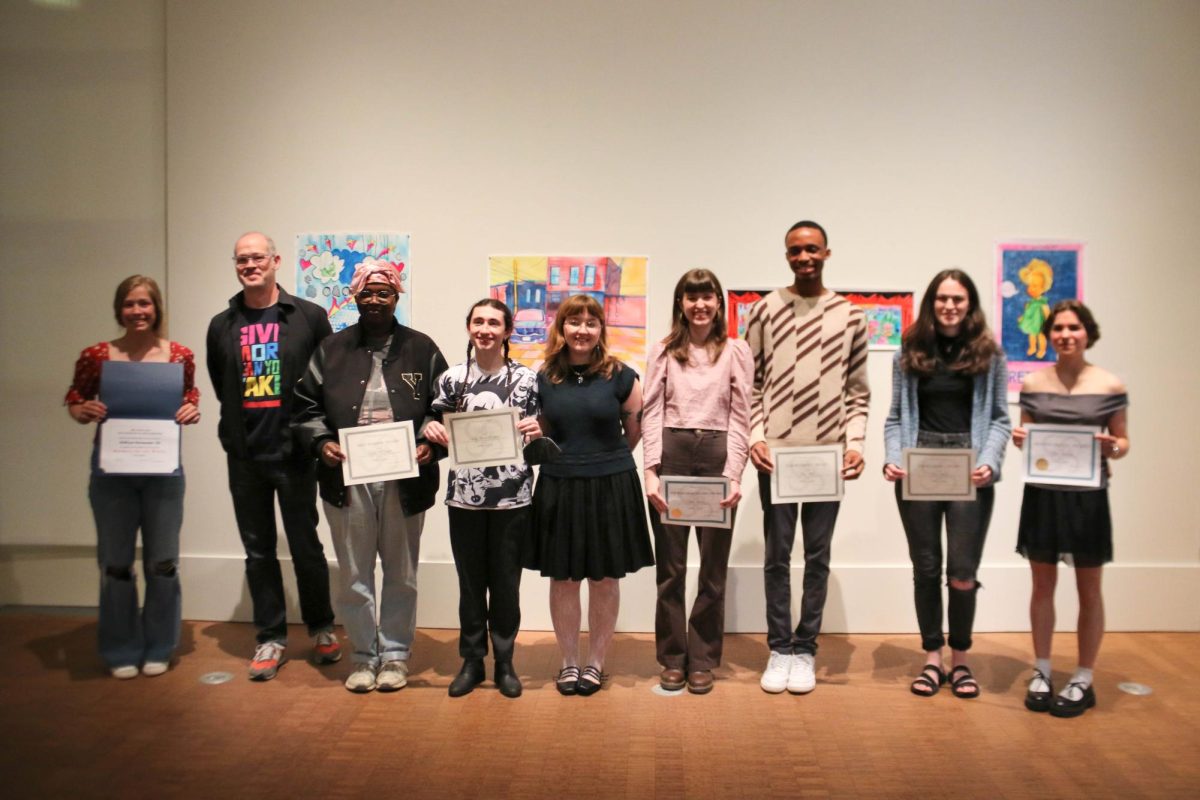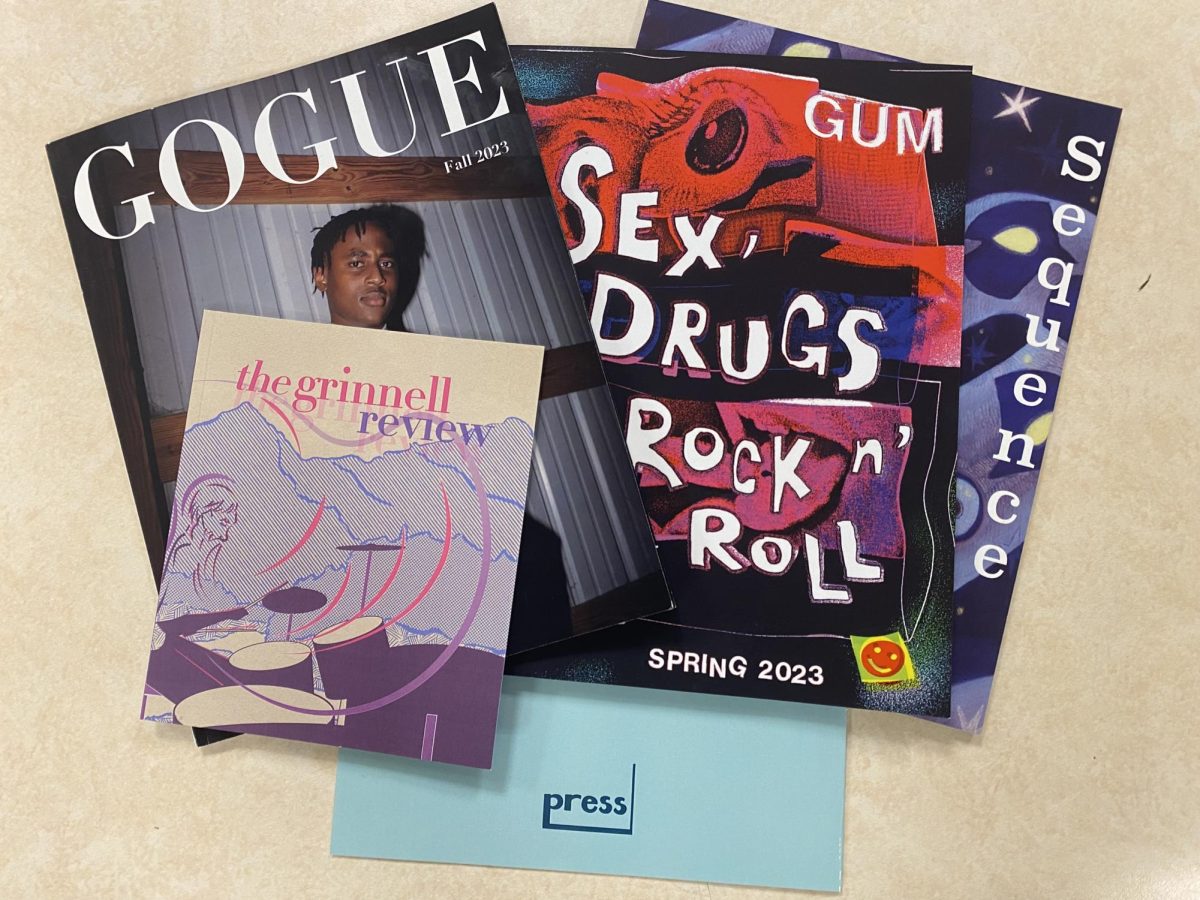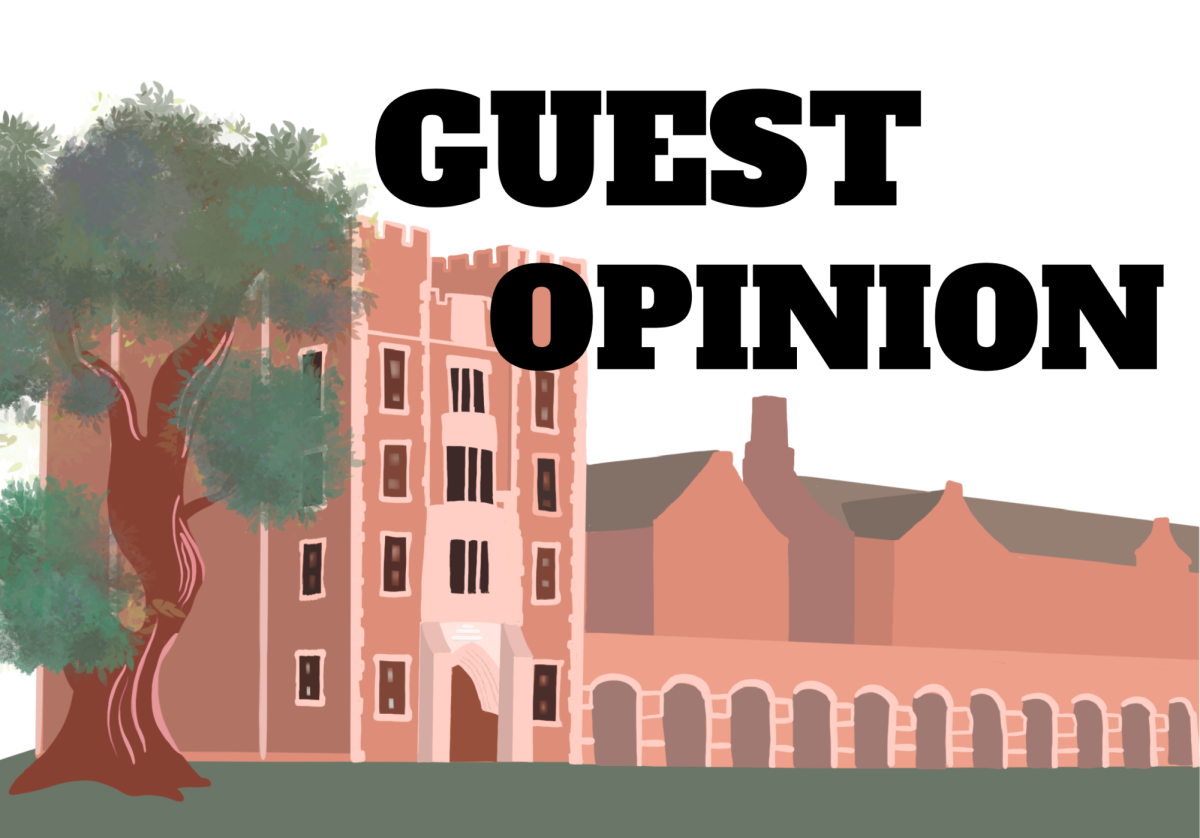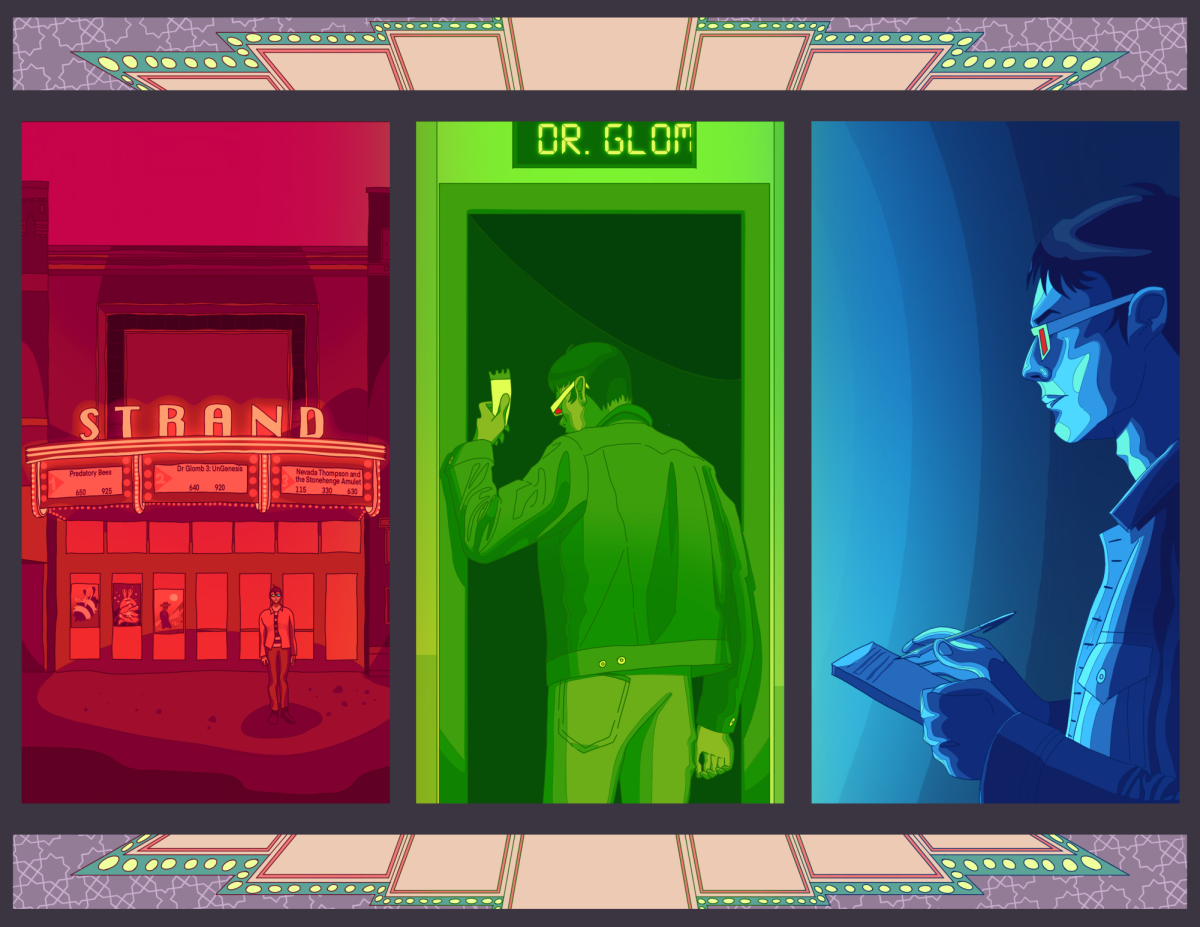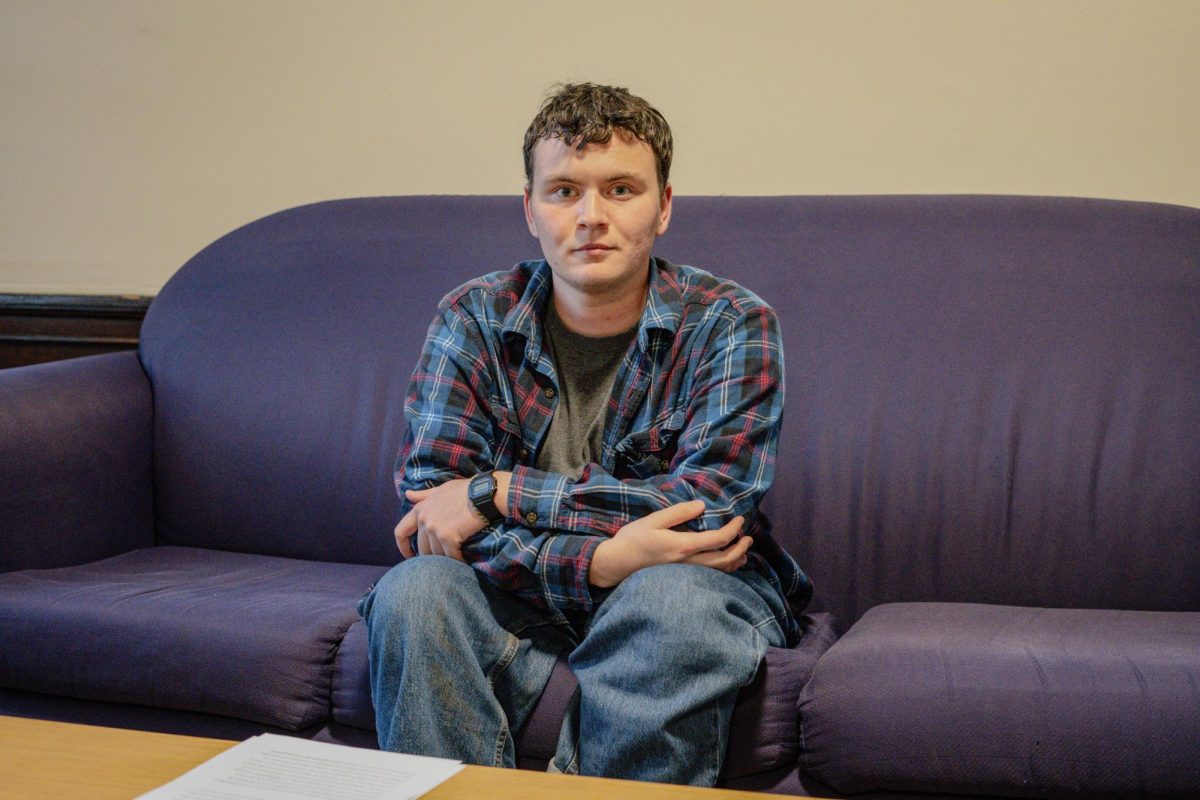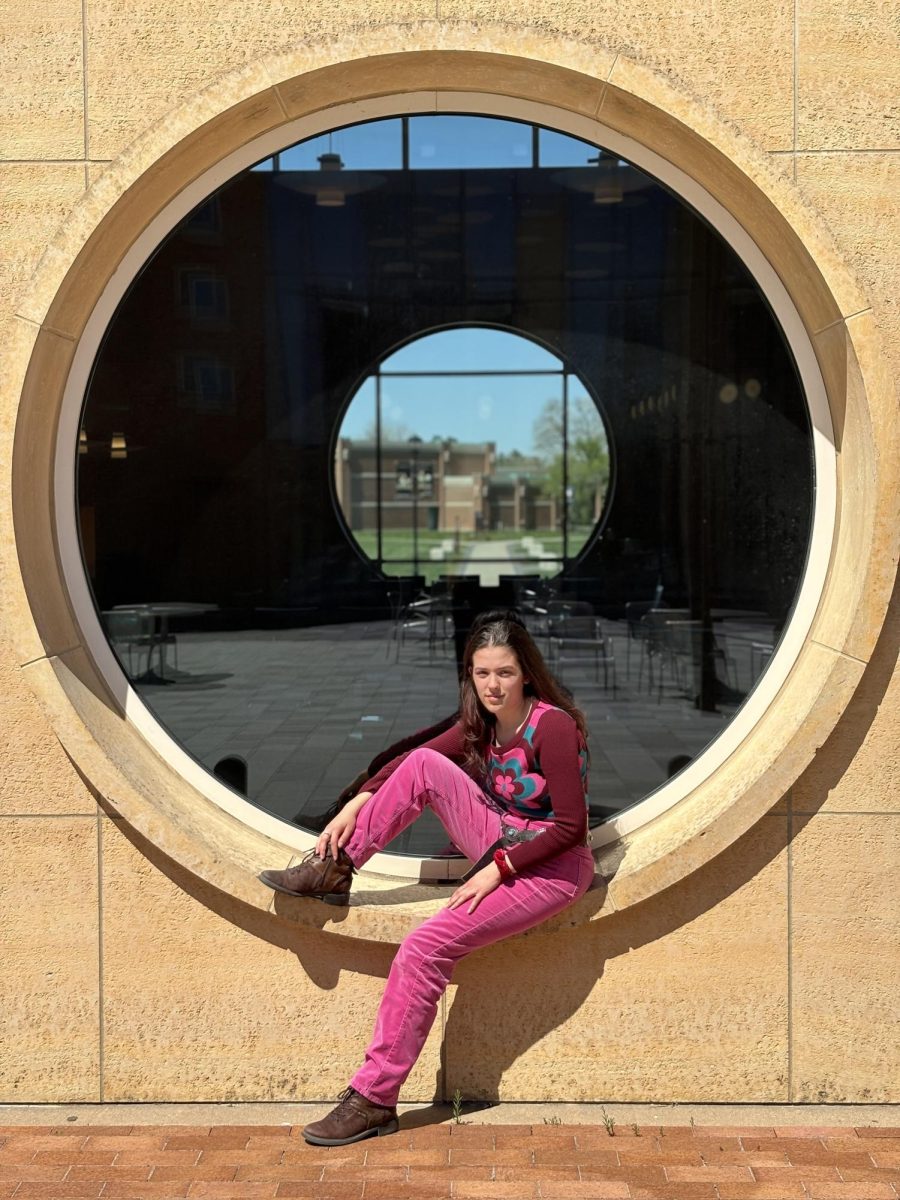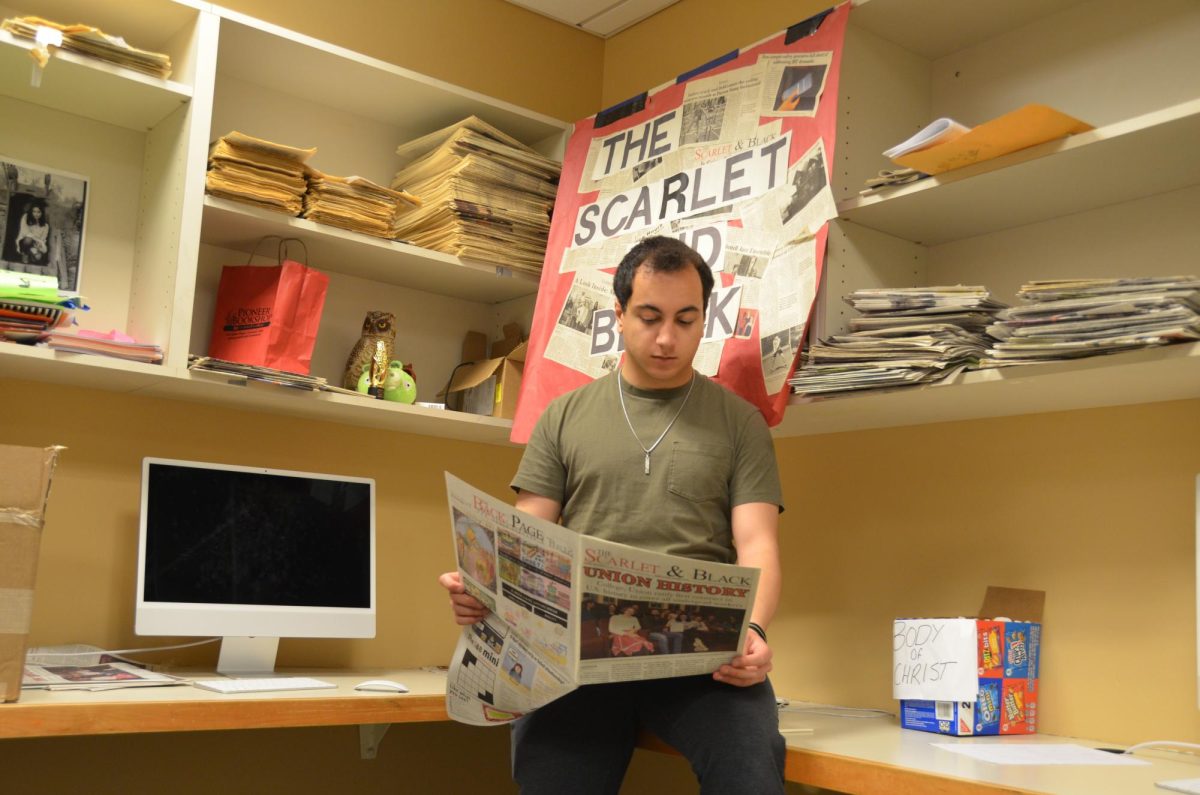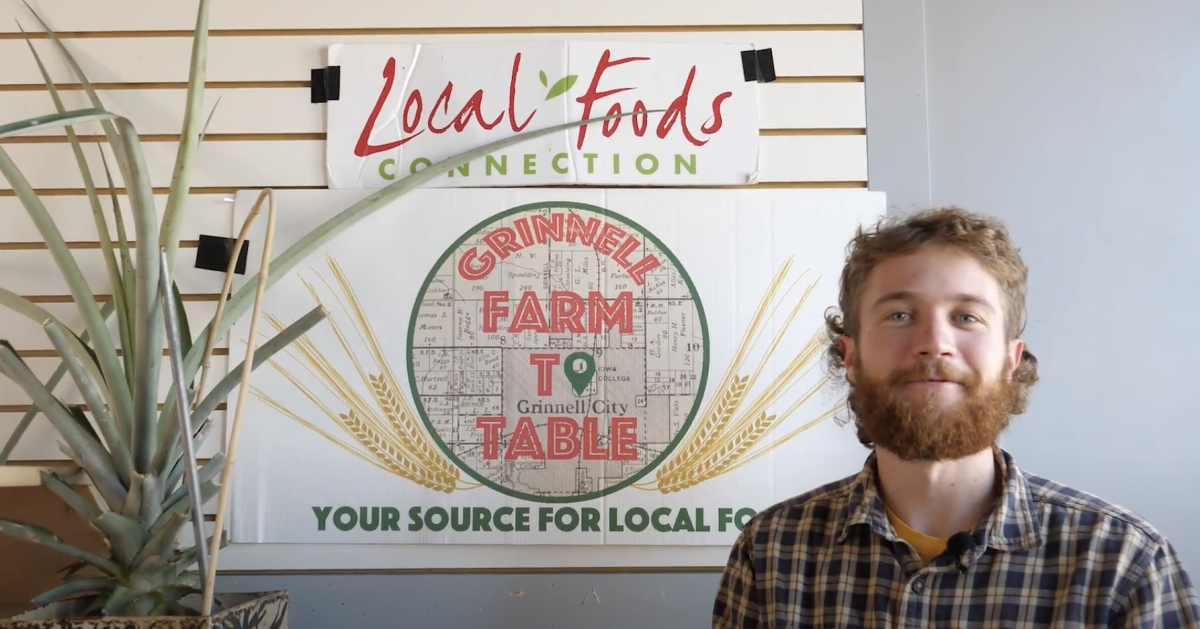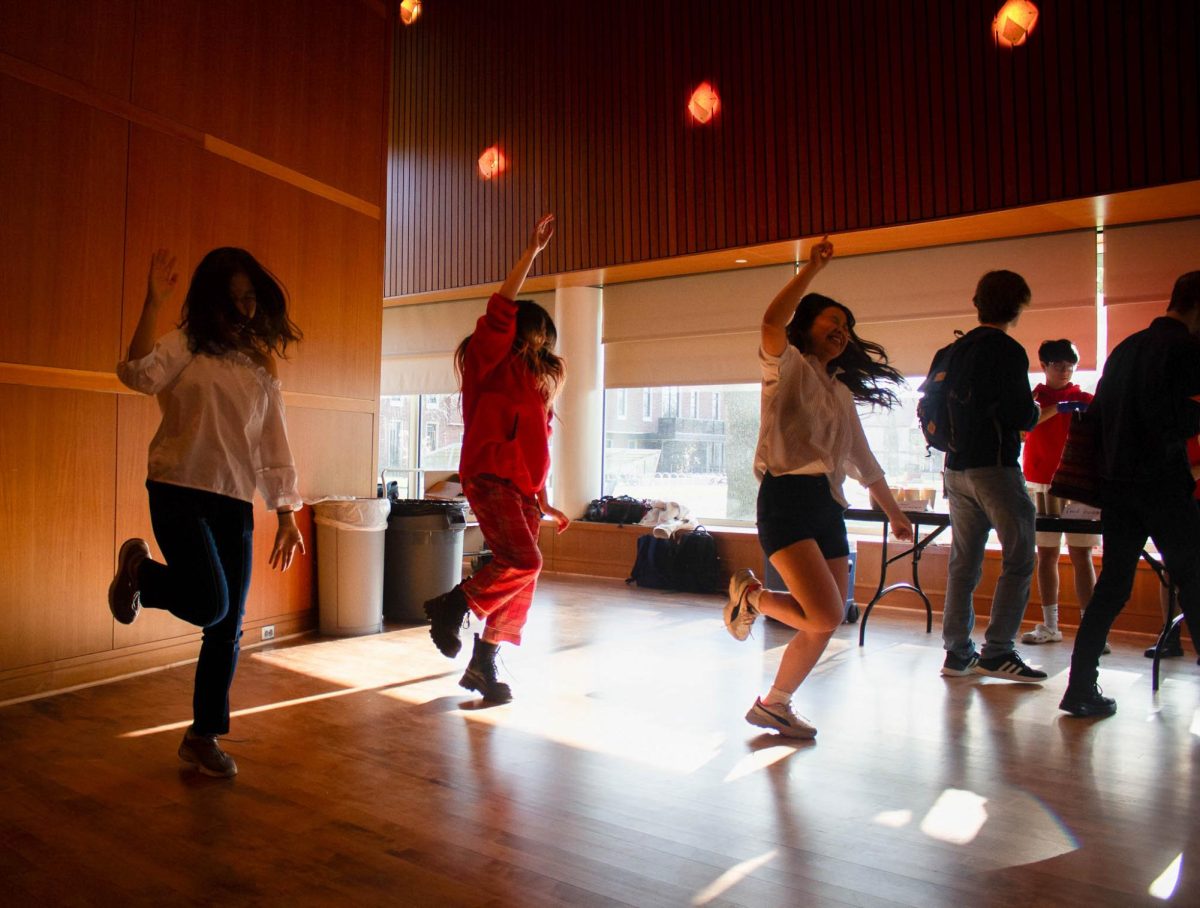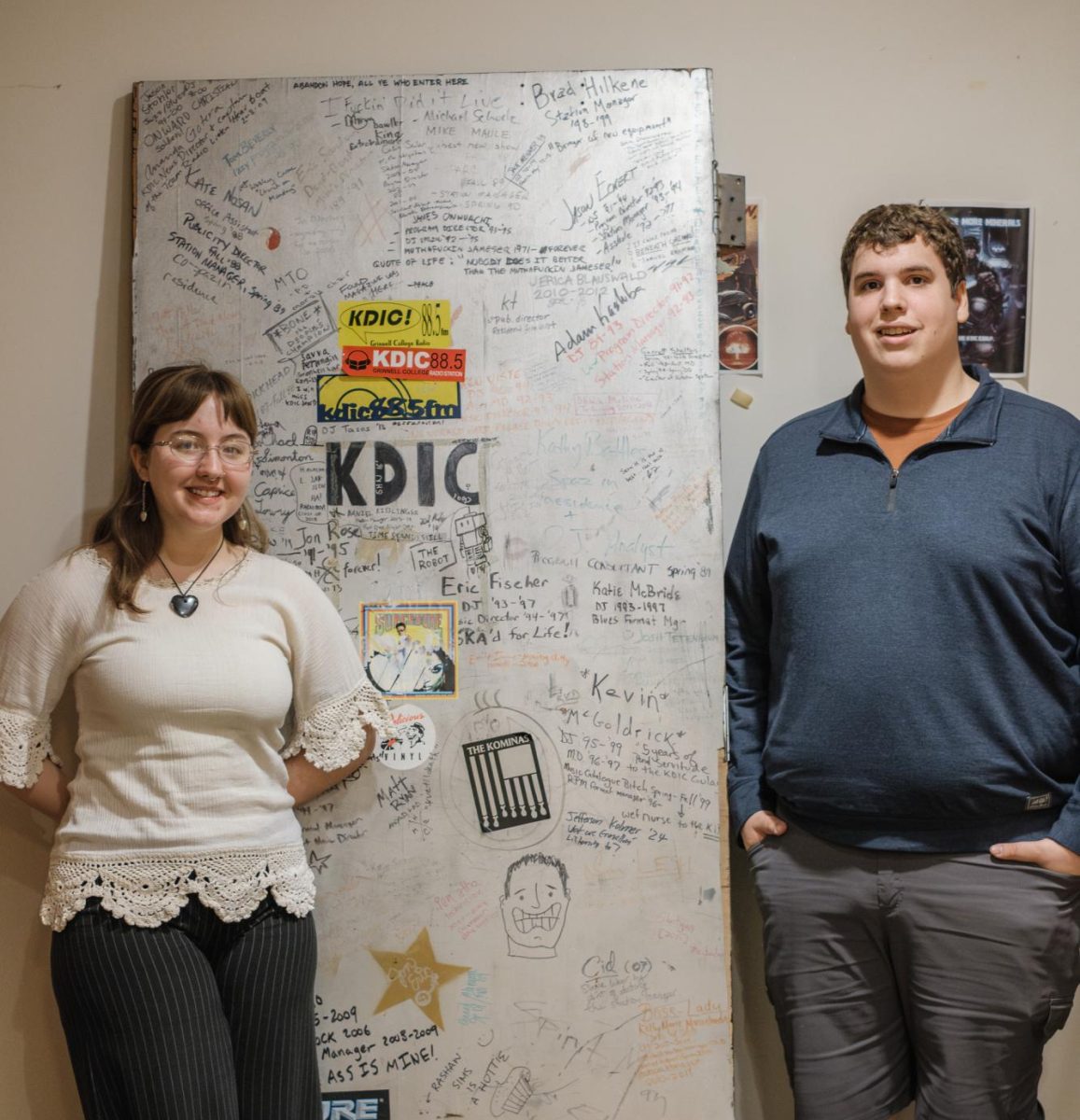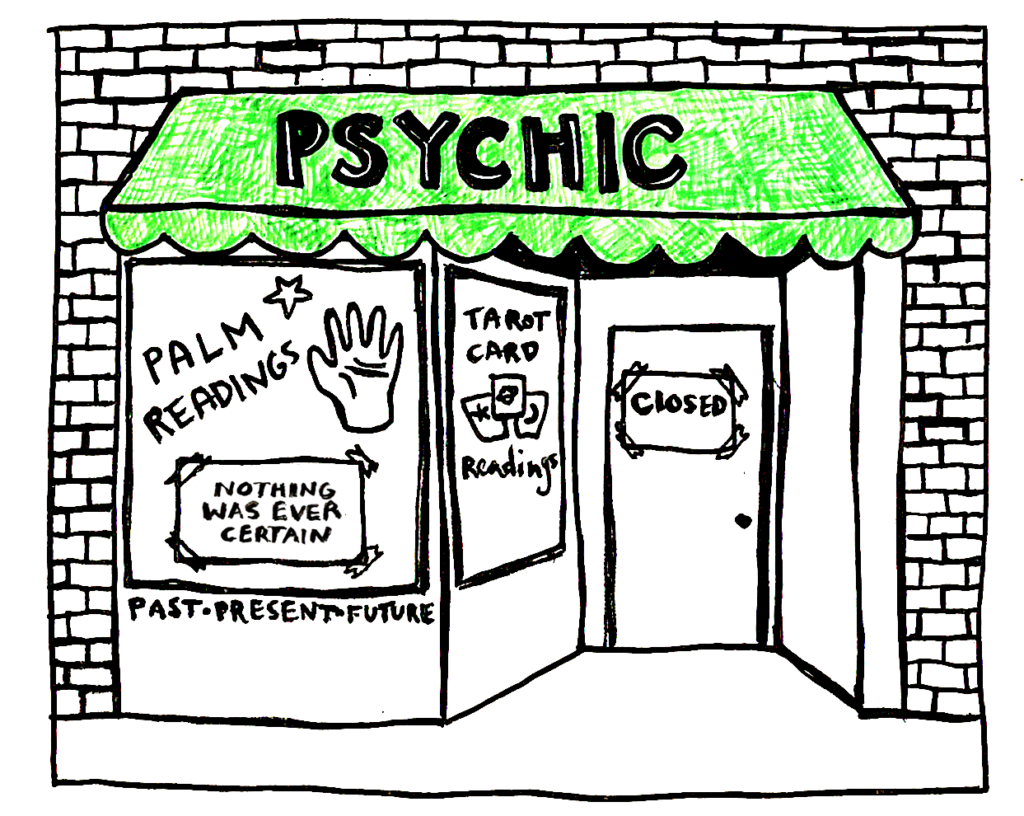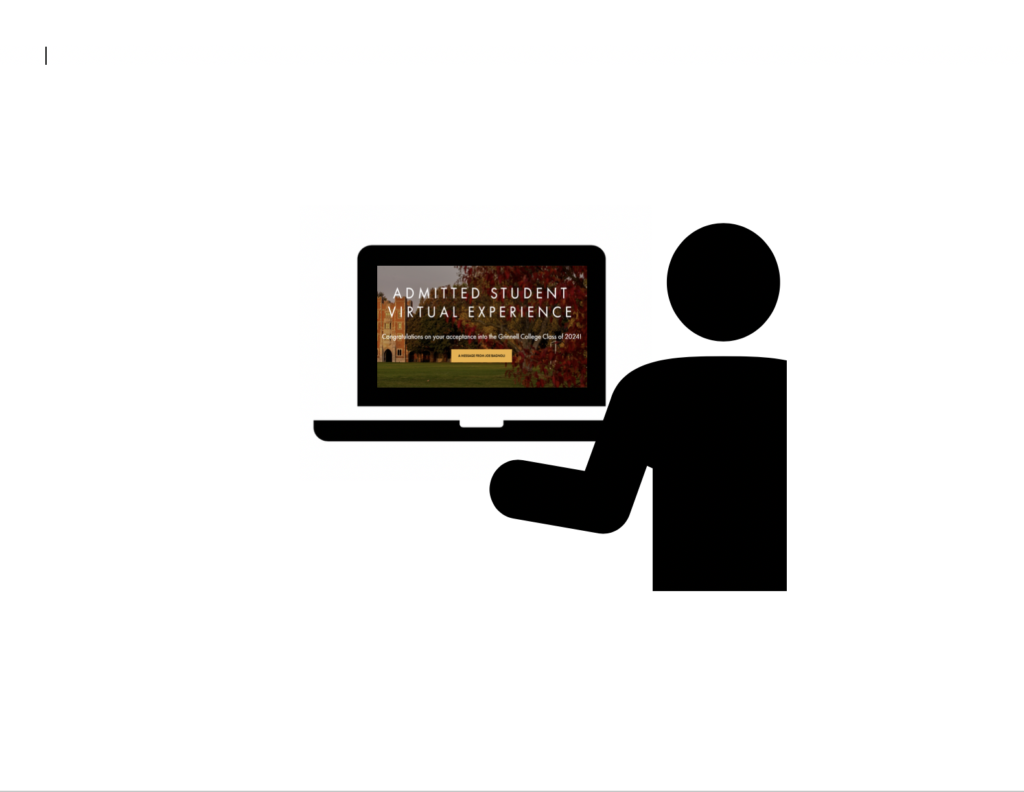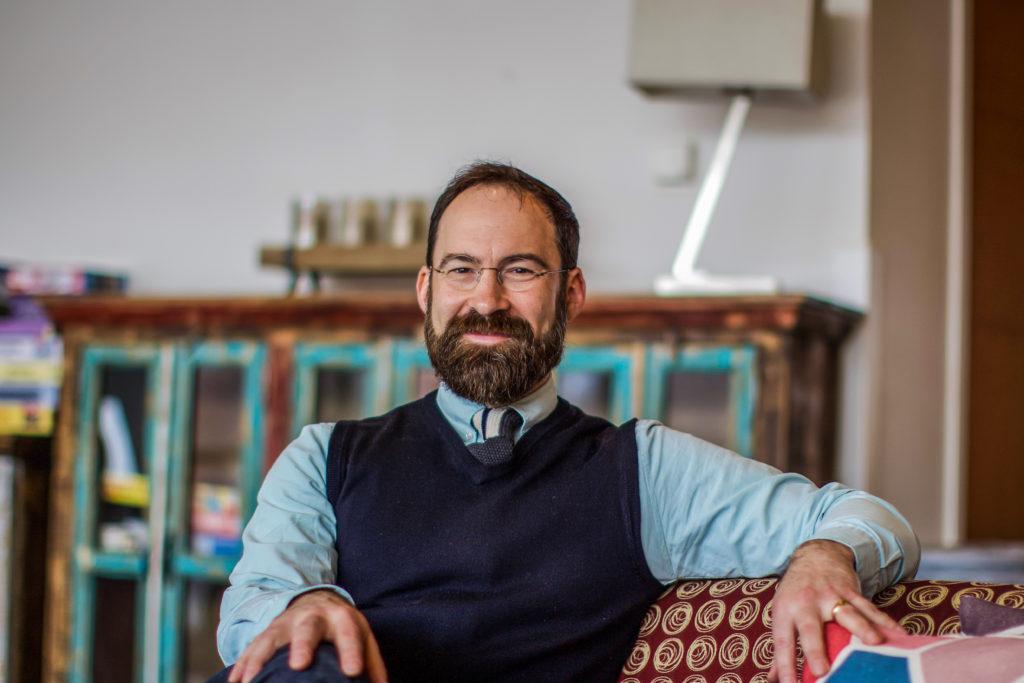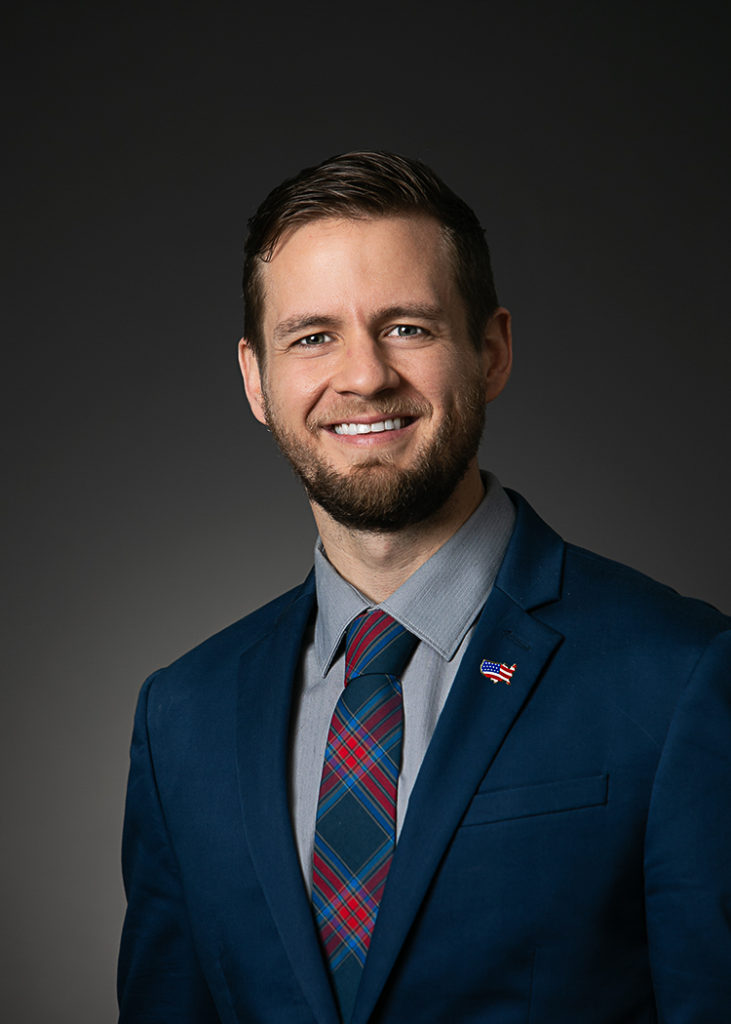By Prisca Kim
kimprisc@grinnell.edu
This week, the Smith Gallery showcased a collection of work by four senior art majors, who in various ways interpreted the meaning of what defines and is part of a person and their identity. “Personal” presents the theme of the portraiture through images of family members, strangers, and self-portraits. Mengyu Chen, Furugh Nahib, Carly Riley and Grace Withmory exhibited pieces in various media, from pastels and paintings to prints and photographs.
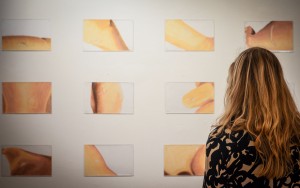
“Personal” brings together a diverse collection of characteristics and qualities connected with people. The artists present a number of answers to the question of what is personal by highlighting various facets of a person.
Chen’s piece “Self Portrait” consists of fourteen digital photos of himself, displaying different aspects of his life. It reveals the various ways Chen views his own life and explores his versatility by presenting himself with different arrangements of objects and changing attire. Each shot provides an impression of who he is as a person through future career paths and sets of values.
The photographs evoke a close and serious reaction with the simplicity of his photos in that he is the only subject amidst a dark background. This collection gives a glimpse of the person behind the art, showing Chen’s character through the different roles and scenarios provided in each image.
Nahib presented two pieces, “Empty” and “War-torn.” “Empty” is a piece using black ink on paper that represents a uniform group of people. They appear, indeed, empty and faceless, as if they are all the same, unable to be differentiated or distinguished. The effect of the black and white combined with the blankness of each person’s face creates a somber ambiance.
“[‘Empty’] depicts the process of praying. I wanted to depict [the] emptiness of the whole process because everyone has to pray the same way, at the same time,” Nahib said.
“War-torn” included three different monotype prints that highlighted views on the media’s exposure of war in Afghanistan and the problems in the war, evoking a negative reaction from viewers. Each piece creates a sense of compassion for the people struggling because of the war. By integrating newspaper clippings from major American papers, the prints realize the ways the war in Afghanistan can relate to everyone, adding candor to the pieces.
“Mostly I worked on how media and Western depictions of war in Afghanistan are portrayed through art,” Nahib said.
Through oil pastel on paper, Riley brought forward the element of scars in her piece “Self Portrait.” Her art consists of sixteen equally spaced pieces, showing different parts of her body. Through various shades of nude, the entire subject is hinted at, causing the viewer to consider what the sixteen pieces together make up.
“[Documenting my] scars was a really interesting way to look at myself,” Riley said. “Each of the sixteen little panels is a scar on my body.”
A feeling of intimacy emerges from the close-up images of skin, presenting a very personal element of Riley’s life. Her work serves as an interactive piece in that the audience, too, can relate to and reflect on scars.
“I would like people to look at their own scars and take a look at themselves,” Riley said.
“Familiar Memories” is Withmory’s set of four oil paintings on canvas paper. Each displays a face of a seemingly overjoyed person, almost contaminating the space around the paintings with this same emotion.
“These paintings were done without any picture to reference. I kind of took the expressionist feel of adding my own emotions to the painting,” Withmory said.
Although all of the characters appear to share the same emotions, there is a distinct color setting to each painting that helps to boldly define the faces.
“I specifically chose colors that I thought fit well with how I interact with these people. I went for more of a flat feel to the whole image,” Withmory said.
Withmory’s art delivers a deeply emotional punch because of the feelings the artist communicates through the facial expressions of her subjects, allowing the audience to participate in sharing those sentiments.
“My paintings are of my family members,” Withmory said. “I wanted to work with how memory creates a distortion because, over time, memory fades and we tend to forget certain details.”
